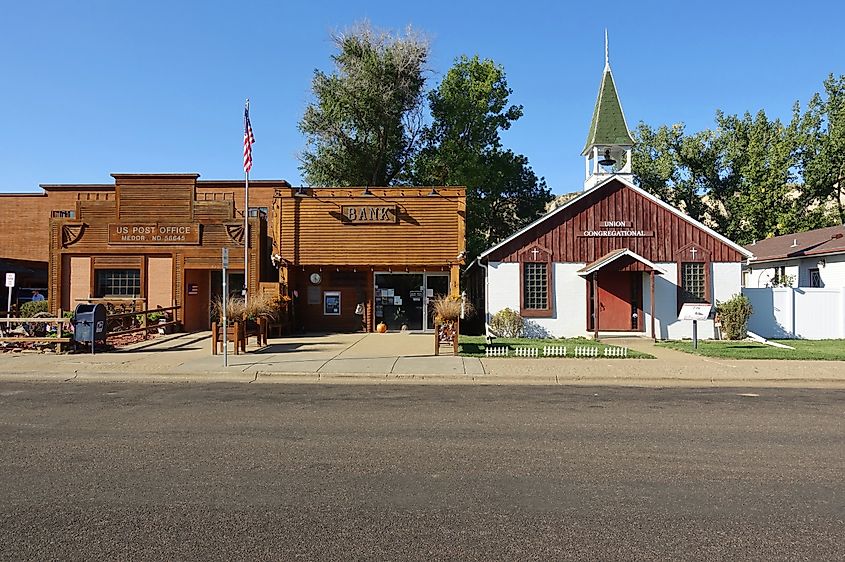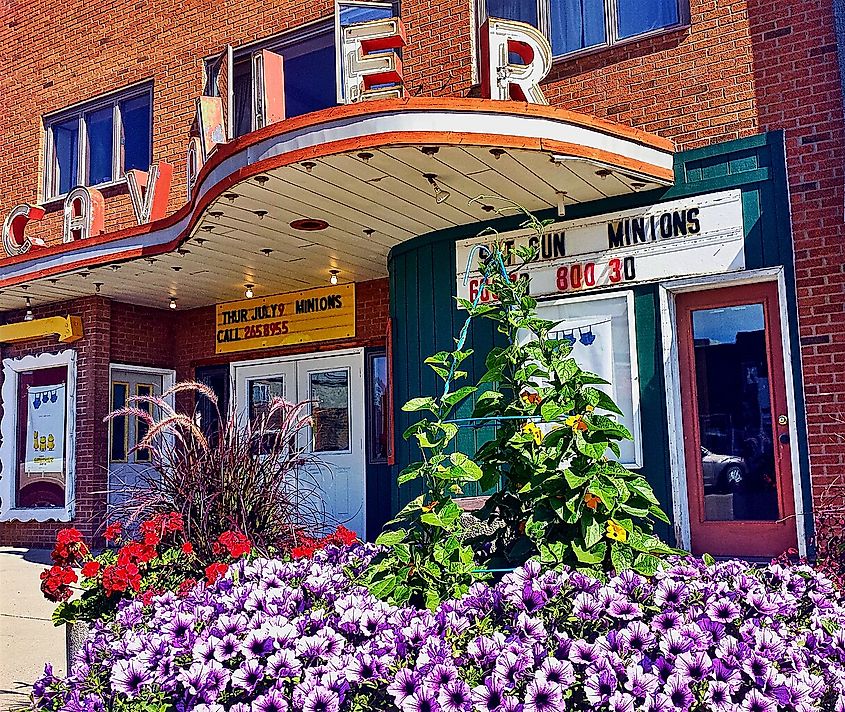
7 Must-See Historic Towns in North Dakota
North Dakota is seated among the vast expanse of the Great Plains; a land shaped by glaciers, eons ago. The state’s culture and heritage are as varied as its topography. The fertile Red River Valley is distinct from the rocky and rugged Badlands, as Native American tribes of the area were to the early European explorers, fur trappers, and settlers, who later built the towns of the state. Yet there is a relentless spirit that unites it all. Journey to uncover the often-overlooked narratives of the historic towns of North Dakota.
Explore towns like Medora, the gateway to the Theodore Roosevelt National Park. Visit Cavalier and Grafton of the Pembina Valley and hear the echoes of the settlers and traders who dug life out of the black soil. Valley City has quaint bridges and a historic downtown. Rugby is proud to be the geographical center of North America. There is much to see and do in these historic towns!
Medora

The small town of Medora was founded by a French nobleman, Antoine de Vallombrosa, and named after his wife, the former Medora von Hoffman. Medora was originally a railroad town, lying along the transcontinental rail line of the Northern Pacific Railway. The town has a connection with former American President Theodore Roosevelt, who, as a young New York politician, spent time in the area, purchasing two sizable ranches. Roosevelt described his years in the badlands as the “romance of my life” and believed his experiences there forged his metal.
The topography features rolling hills, the badlands (rock formations in what is now a national park), and the Little Missouri River, which runs nearby. The term badlands is translated from a Lakota word and was described that way originally by European explorers, who found the rocky terrain difficult, in contrast to the Great Plains of North America, which are flat and grassy. Historical landmarks include the Theodore Roosevelt National Park and the Old Town Hall Theater. One commercial attraction not to miss is the Historic Medora Musical.
Cavalier

Named after Charles Turner Cavalier, the town of Cavalier was established in 1877. Charles Turner Cavalier was a fur trader, the first settler in North Dakota, and the postmaster of the fur trading post at Pembina. Before that, he was a librarian and US customs inspector. The town has long had many residents of Icelandic heritage, and they celebrate that heritage with events and festivals throughout the year. Top landmarks are the Icelandic State Park, the Pembina County Museum, and the Gunlogson Arboretum. One commercial attraction not to miss is the Cavalier farmer’s market. Upon visiting the town, one will find a terrain of mostly flat prairies with the nearby Pembina Gorge.
Grafton

Nils Monson, a 29-year-old bachelor, homesteaded the area that is now Grafton. Monson walked the roughly 120 miles to Grafton from Winnipeg. Monson later deeded his 160-acre homestead to the town, which was settled by Thomas E Cooper in 1879. Cooper became the postmaster in the area after the post office was constructed.
The Northern Pacific Railway and the Great Northern Railway eventually made its way out to Grafton, and that is when the town developed. The town remembers the early settlers with events throughout the year. The must-see historic landmarks include the Historic Walsh County Courthouse, Heritage Village, and Centennial Center. Visitors to the town will find a mostly flat terrain graced by the Park River.
Valley City

What is now known as Valley City was once a hunting ground for the Cheyenne, Sioux, Cree, and Ojibwa Indigenous peoples. The arrival of the Northern Pacific Railway led to the founding of Worthington (renamed Valley City) in 1872. The fertile lands of Valley City provided crops of sunflowers, wheat, barley, corn, and soybeans and made the town a hub for trade. The town’s Scandinavian influence is seen in the architecture and its cultural events. Valley City is bounded by the Sheyenne River and is known for its many bridges and parks. Historical landmarks are the Medicine Wheel Park, Sheyenne River National Scenic Byway, and the Barnes County Historical Society Museum.
Rugby

Rugby is another railway town that was founded in 1886 and prides itself on being the Geographical Center of North America. The town was settled by German and Scandinavian immigrants and provided abundant farmlands of wheat, rye, barley, sunflowers, and dairy products. Landmarks are the Geographical Center of North America Monument, the Victorian Dress Museum, and the Prairie Village Museum. The International Peace Garden is only about 45 miles away on the Canadian border (established in 1932 to celebrate the friendly relations between the US and Canada). Visitors will enjoy views of the flat, open plains and farmland.
Wahpeton

The river town of Wahpeton was settled in the early 1860s by Morgan T. Rich, a farmer. Other settlers arrived in the late 1860s and formed a small community. The US post office was established in 1871. In the early years of the town, the population growth was modest, however, by 1872, with the arrival of the railroad line, rapid growth took place. The area became a center for flat boat building.
Flatboats were essential for carrying freight on the Red River to northern parts of the state and up into Canada. Local historical landmarks are the Chahinkapa Zoo, Richland County Historical Museum, and the NDSCS Foundation (at the North Dakota State College). Visitors will enjoy the Red River, which runs along the town, and won’t be too challenged by the town’s flat terrain.
Lisbon

The "Trail Town" of Lisbon lies along the beautiful Sheyenne River Valley in southeast North Dakota. Known for its tall grasslands and pleasant prairie, the town was founded in 1880. The Sheyenne River was an essential source of power for the town’s three flour mills. The North County trails go between the Sheyenne River National Scenic Byway to the north of Lisbon and the Sheyenne River bluffs to the south.
Today these trails are ideal for hiking and camping activities, as well as enjoying nature. Historic landmarks include the Opera House and Scenic Theater. The Opera House is on the National Register of Historic Places. The theater has been showing silent films since 1911 and is considered the oldest continuously operating theater in the US.
Historic Towns of North Dakota
Some think of North Dakota and the Midwest generally, as flyover county. It is not on many people’s vacation bucket lists. However, these towns of North Dakota are repositories of the people who formed this land. Home to Native American tribes, pioneers, and traders, their spirit has been woven into the fabric of American culture. From the sweeping beauty of Medora to the charm of Lisbon, each town is a testament to the lives and cultures that built the state.











